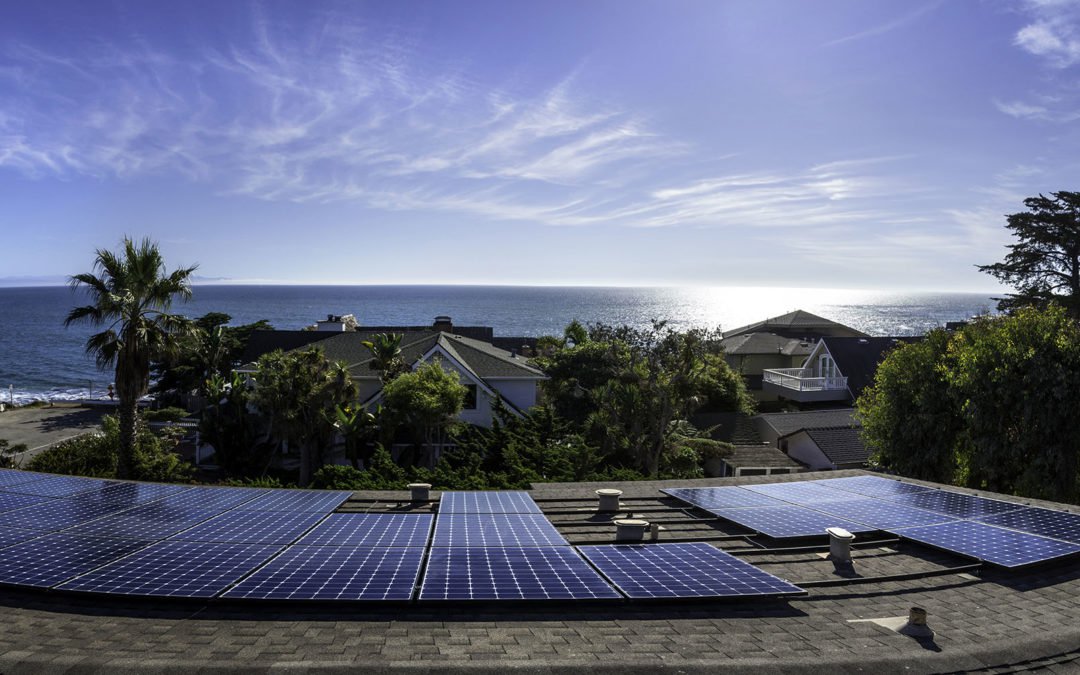California’s 100 Percent Clean Energy Act, Part 2
Massive build-out of wind and solar, particularly in the Desert Southwest
- January 17, 2019
- Gillian Charles

The Western Electricity Coordinating Council region may have to develop at least 145 gigawatts of new renewable resources to meet California’s 100 percent clean energy goal by 2045, according to a preliminary analysis by Council staff presented at its December meeting. This amounts to about 100 gigawatts more development than would have been built under the previous policy.
Earlier this year, California passed legislation (Senate Bill 100, known as “The 100 Percent Clean Energy Act of 2018”) that strengthened and accelerated its renewable portfolio standard. The new law targets 60 percent renewable energy by 2030 and commits to a 100 percent zero-carbon energy supply by 2045. To understand the impact of this legislation beyond the immediate effects in California, Council staff performed a WECC-wide analysis based on current understanding of policy and new resource costs.
By 2045, of the approximately 100 gigawatts of new renewables forecast to be built to meet the California policy,70 percent are wind and 30 percent are solar resources. This is mostly driven by their increasingly low capital costs compared to other renewable and clean options such as geothermal, small modular reactors (nuclear), and energy storage (batteries).
Also significant is the location of the new resources. While initially much of the new resources have been developed in California, by 2045 more than half of the wind and solar will be built outside of California, with over 20 gigawatts of new capacity in the Desert Southwest. In addition, wind generation has surpassed hydropower as the largest source of electricity in the WECC. California becomes even more reliant on imports from its neighbors, especially from the Pacific Northwest in the spring and summer, and the Desert and Mountain West in the fall and winter.
Long term, carbon emissions from the electricity system in the WECC will decrease because of SB 100. Without SB 100, emissions would increase slightly due to increasing WECC loads over time. Yearly emissions still depend on the availability of Northwest hydropower, but to a slightly lesser extent.
The California policy also curbs expected wholesale electricity price growth throughout most of the WECC, but the annual and seasonal variability in prices increases, especially under low Northwest hydro conditions.
The analysis found that daily prices have two main peak periods: 6 to 10 in the morning and evening, with the lowest prices in the middle of the day. The high periods correspond with the sun’s rising and setting when people prepare for and come home from work.
Wind resources tend to be stronger in the evening and early morning as the temperature changes, which keeps prices down, even though solar resources are at zero or low production. Because of the variability of renewable resource production, prices can be extremely volatile from hour to hour; but in general, prices are forecast to stay low.
Construction of new transmission, modification of market policies, and the potential impact of electrification are all factors that might significantly change our view of the future. Additionally, massive amounts of wind and solar resources makes the management of the power grid more complex and will likely require significantly more resources to be built for reliability.
John Ollis, power system analyst, contributed to this post.
Read part 1:


